POPULAR INTERIOR DESIGN STYLES | FIND YOUR STYLE
This post may contain affiliate links. If you make a purchase through one of my links, I may make a small profit at no expense to you. For further information, please view my policies.
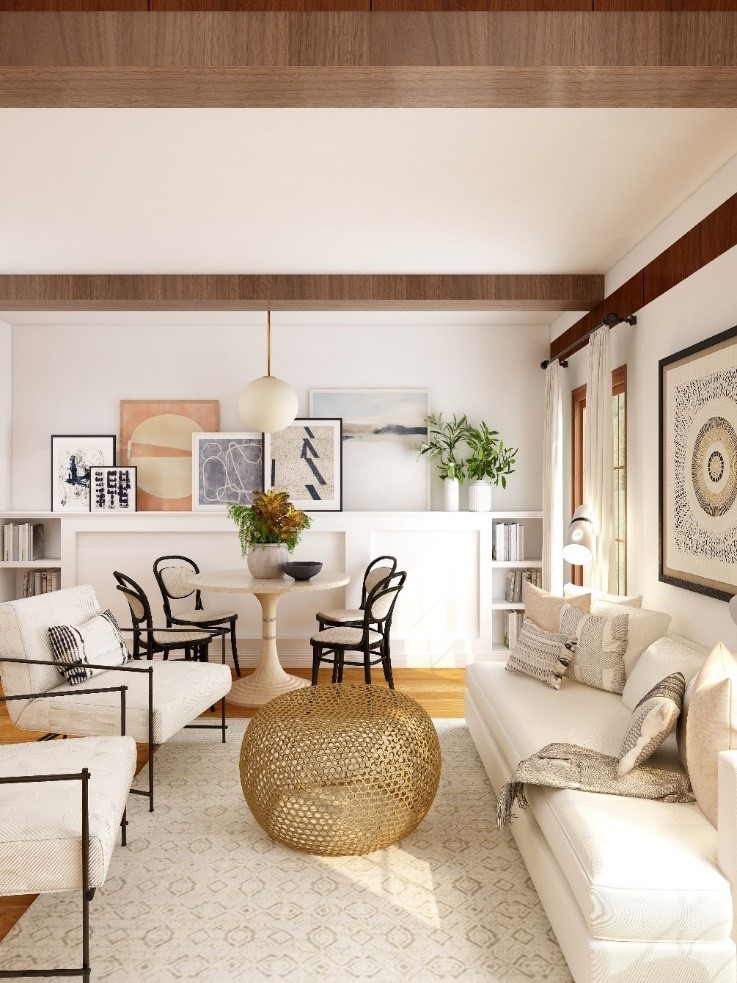
Interior design styles are constantly evolving making it difficult to keep up with what is in fashion and what is out.
It’s easy to make mistakes in interior design, especially if you don’t know the differences between the various styles.
In this article, I’ll go over the 15 most popular interior design styles, helping you get a clearer idea of what suits your preferences. Figuring out your style can be challenging if you’re unsure about the differences between them.
If you don’t find a style you like, it’s possible you’re drawn to a combination of styles. In recent years, mixing interior design styles has become quite common, so I’ll also share some tips on how to blend them effectively.
I’ll be breaking everything down—explaining different color schemes, elements, and characteristics you can use to achieve the design style you’re aiming for.
Bohemian Design Style
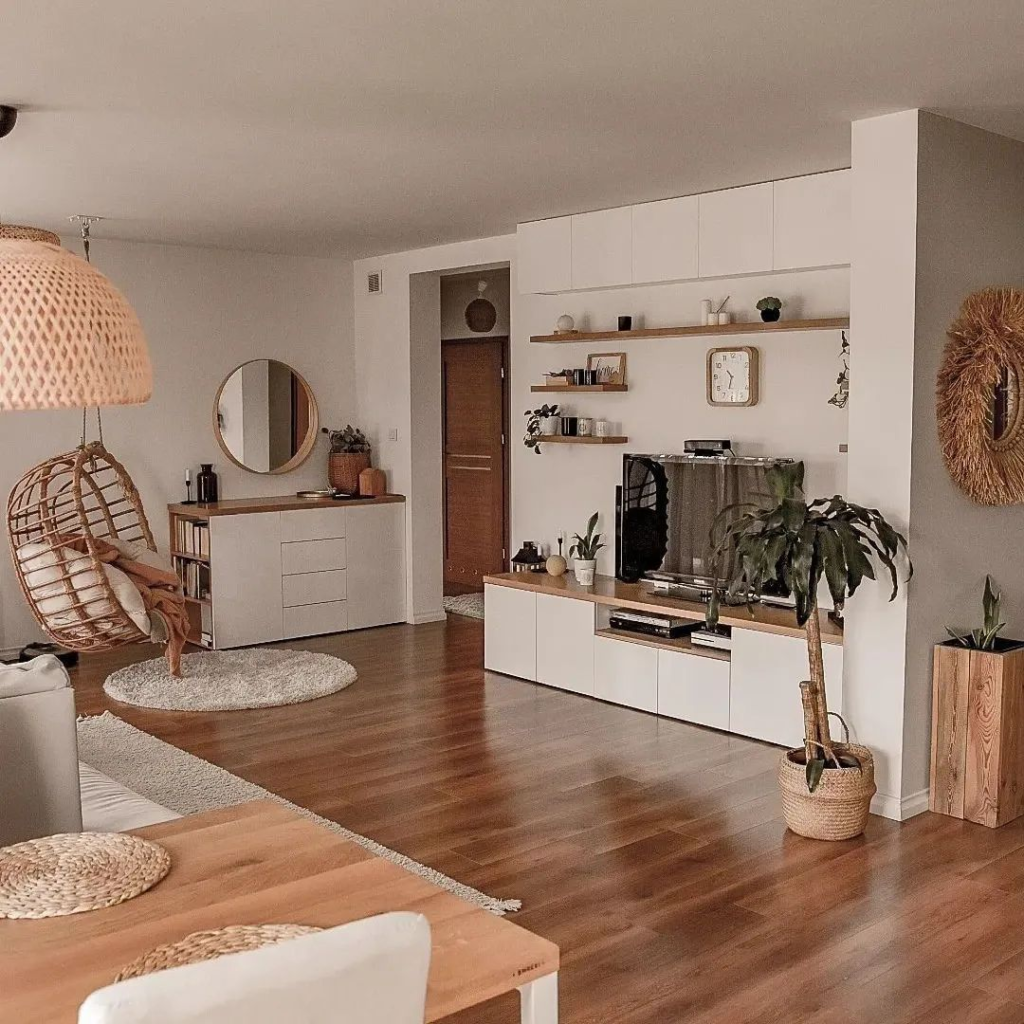
Bohemian style AKA boho chic style is all about layering, incorporating plants, textures, and collecting various pieces to display.
Boho style is a style that is very open to interpretation where anything goes, it can be neutral, featuring lots of rattan, natural woven textures, whites, and creams. Or, it can go in the opposite direction, embracing bright, bold, and colorful elements.
Boho always feels artistic, full of life and coziness, inspired by the gypsy lifestyle of gathering items from all over the world and layering them together. You’ll often see floor cushions, tassels, pom-poms, macramé, and hanging plants—everything that defines boho.
The boho chic style also embraces thrifting, vintage shopping, and DIY projects. It doesn’t have to be expensive, and nothing has to match. As long as you incorporate textures and colors, you can easily achieve that boho chic look.
It’s all about celebrating culture and travels where you layer collected objects throughout the space.
Historically, this style was very hippie, but in the past three years, boho has embraced a white, airy look paired with natural and organic elements.
Currently, the style has taken on a moodier approach with dark feature walls. The style doesn’t have a defining color palette, some boho spaces use neutrals enhanced by textures, while others incorporate bold accent colors.
In terms of décor, think indoor plants, worn furniture, floor cushions, wall weaves, hanging chairs, mismatched seating, and statement chandeliers.
Some people also experiment with creating hybrid styles, that is boho lux, boho coastal, and scandi boho.
RELATED: Interior Design Styling Tips and Hacks
Eclectic
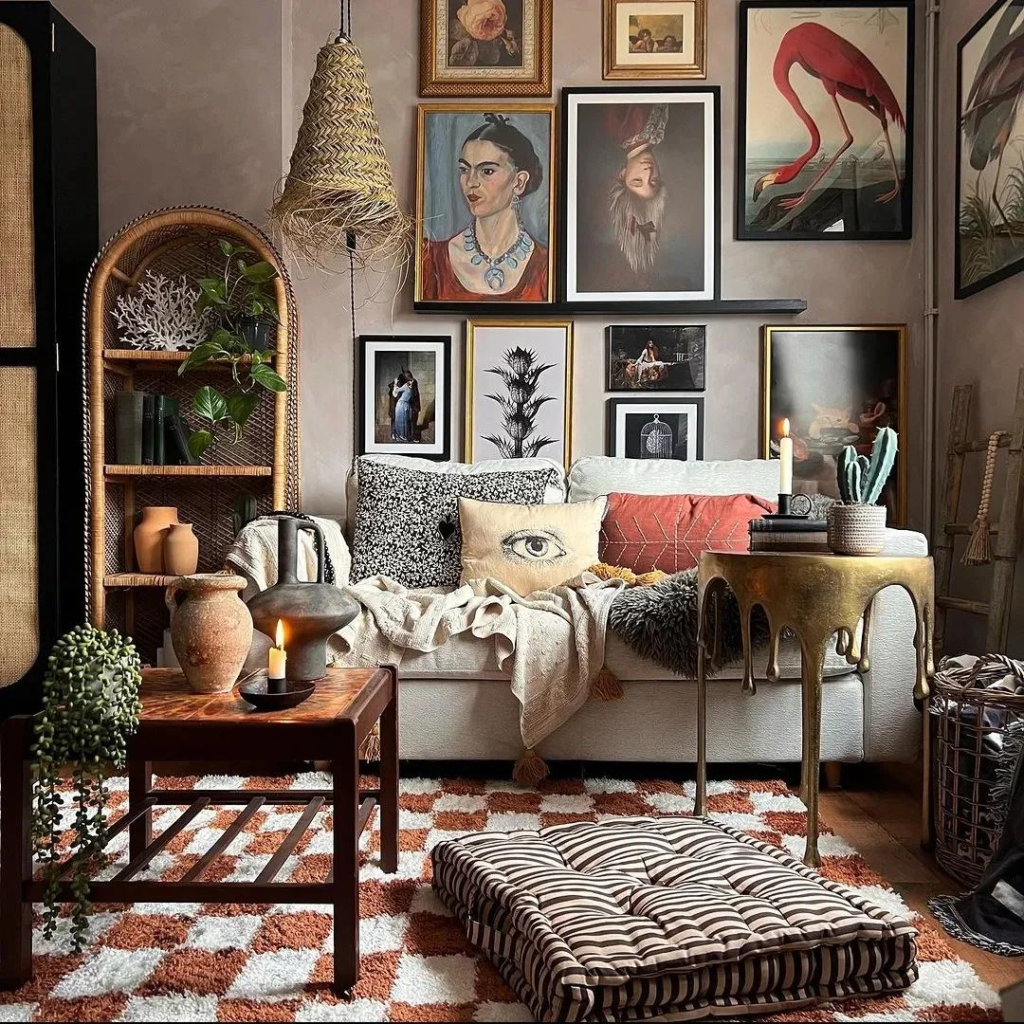
Eclectic design concerns mixing old and new. This is achieved by curating pieces from different periods and traditions.
While it might sometimes be compared to bohemian style, eclectic design is less organic and more deliberate.
It can be challenging to pull off because it involves blending elements that don’t traditionally go together. To make it work, you need a keen eye for styling and should use repetition throughout the space to create a sense of cohesion.
This approach ensures the space feels curated and intentional, rather than a random collection of objects.
Mid-Century Modern Interior Design Style
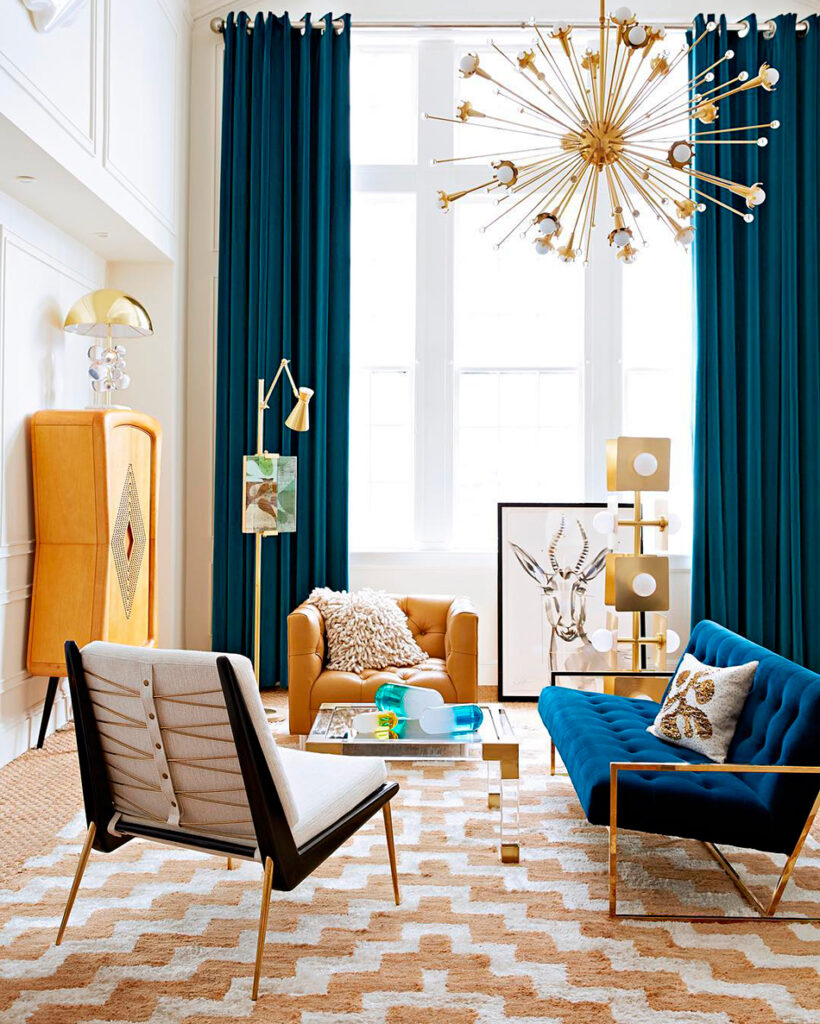
Full of life and color, this design style comes very youthful. It originated in the 1940s through the 1970s, giving off a distinctly retro vibe.
For that reason, it’s all inspired by pieces and looks from back then.
You can spot this style instantly because of its distinct features Furniture often has tapered legs, usually made of walnut or darker wood, or even hairpin legs, which are characteristic of mid-century modern.
Plastic furniture, especially chairs, is another hallmark of mid-century modern, easily recognizable. You’ll also notice a lot of blues, greens, and oranges in this style.
When it comes to mid-century modern lighting, think Sputnik light. with gold, silver, or chrome accents that immediately signal mid-century.
This design style does not have a lot of ornate details, so it’s very sparse, very minimal all about clean lines.
This style is minimal and sparse, with clean lines and few ornate details. If mid-century modern speaks to you, shops like CB2, West Elm, and Article offer plenty of pieces to help you achieve the look.
RELATED: How To Decorate Light Academia
Country/Rustic
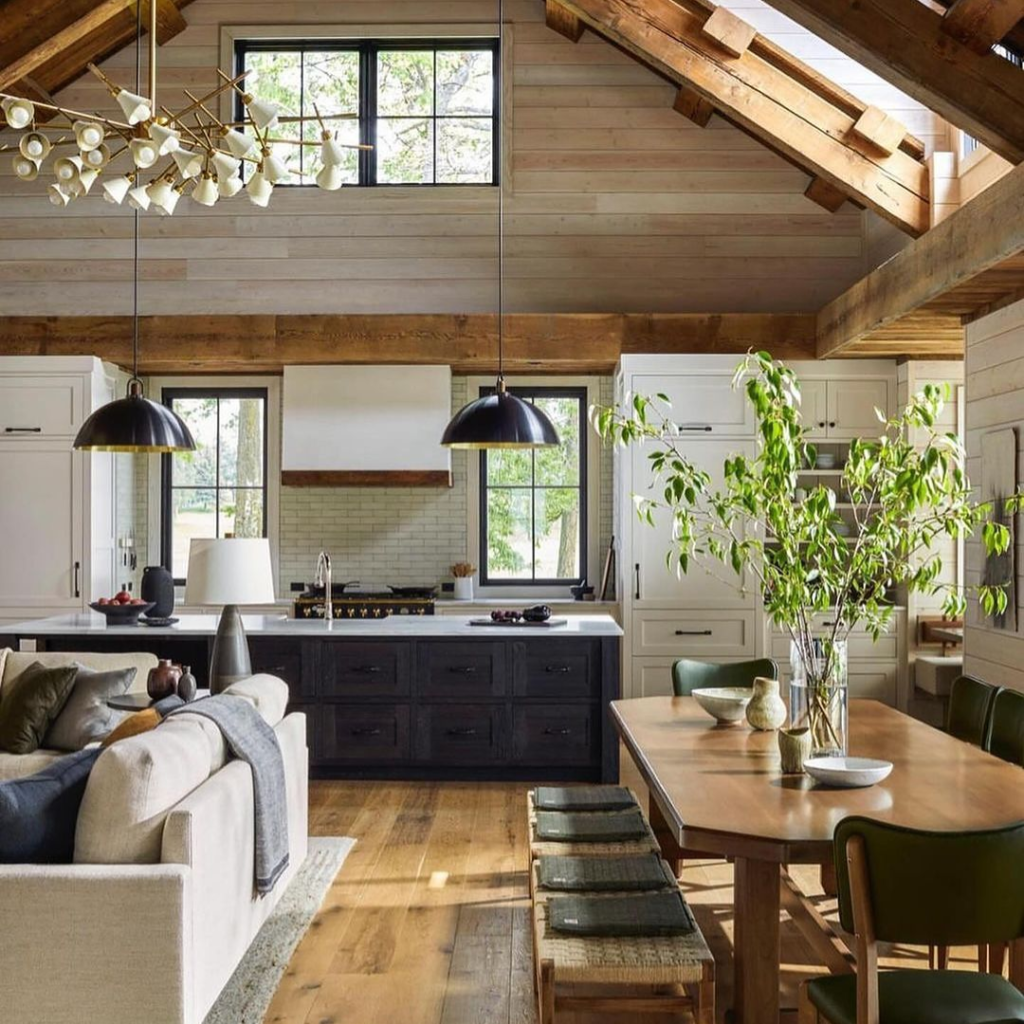
The country or rustic style is similar to the modern farmhouse style but without the modern twist.
This design is all about simple materials, handcrafted pieces, and a charming cottage look.
Originating in 17th-century Great Britain, the country or rustic style features elements like distressed furniture, barn lighting, Chesterfield sofas, and perhaps a tea set on the dining table.
The color palette primarily consists of deep earthy tones.
Farmhouse & Modern Farmhouse design style
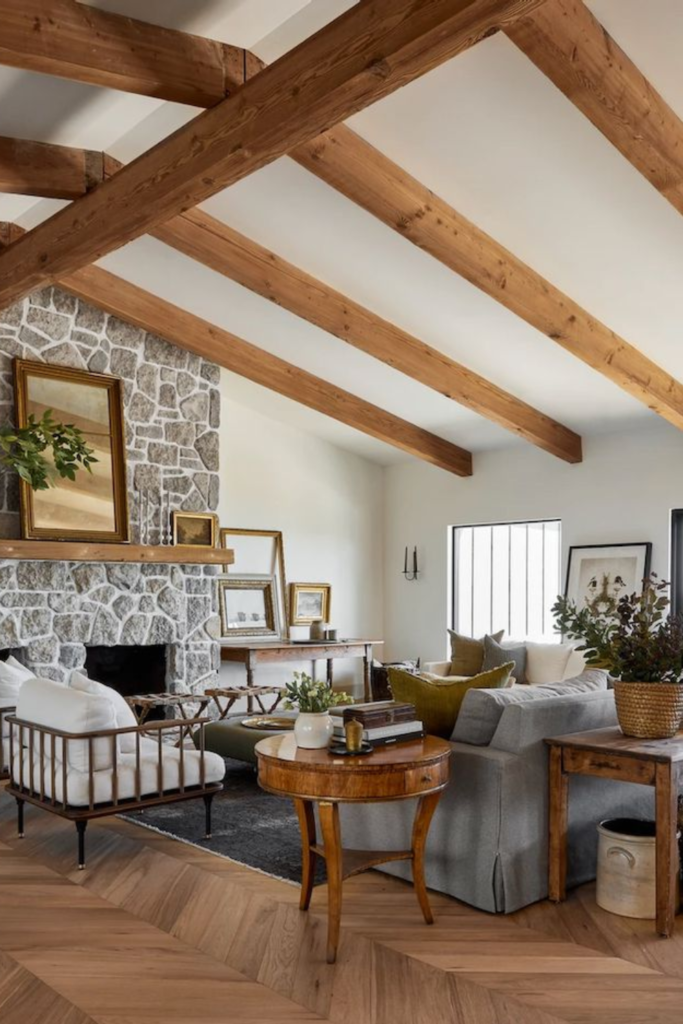
Loved by some and disliked by others, farmhouse and modern farmhouse styles are distinct and easy to achieve.
The modern farmhouse style is best suited to homes that already have farmhouse architectural features, like exposed wood beams and black frame windows. So if you’re living in a farmhouse, or country home where the builder has created that style already, it will naturally work.
This style is all about nodding to simpler times by creating a cozy, homey ambiance. It takes the comforting and cozy elements of country design but with a sleek twist through incorporating clean lines.
One of the most distinctive materials used in this style is sawfish timber, which can be introduced not only through architectural details like wooden beams but also in chalk-painted, distressed furniture pieces, as well as chairs and tables with accent details.
The rustic elements are then contrasted with modern features such as stools with hairpin legs.
This style is very easy to achieve if you bring in shiplap, black windows, wood beams, axe details on furniture, chalk-painted distressed pieces, apron sinks, rustic décor elements.
If you’re looking for affordable décor to add to your farmhouse home, a good place to start is Hobby Lobby. Hobby Lobby has a ton of farmhouse-inspired pieces.
RELATED: How To Decorate Dark Academia
French Country Interior Design Style
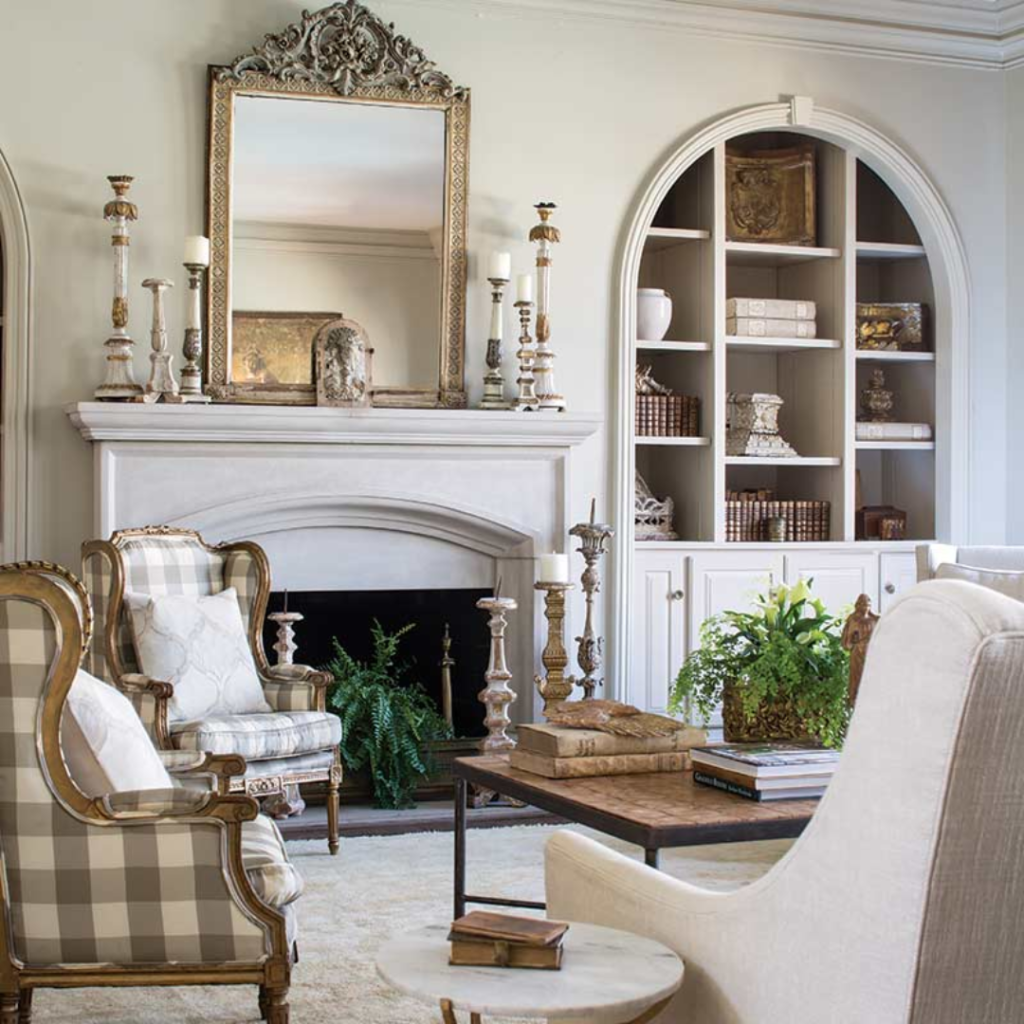
Switching gears to a lighter, airier look, we have the French country style.
This design is characterized by linen furniture, stone elements, large fireplaces, traditionally shaped furniture, dramatic chandeliers, and a soft color palette. It’s quite different from the farmhouse style, which features high-contrast black and white.
French country décor, in contrast, is muted and pale with low contrast.
Stores like Pottery Barn, Crate & Barrel, and Restoration Hardware offer beautiful linen skirted furniture pieces that are perfect for achieving the French country look.
***I love that it gives off a little bit of a European look, and it’s just so beautiful and timeless.***
Scandinavian Design Style
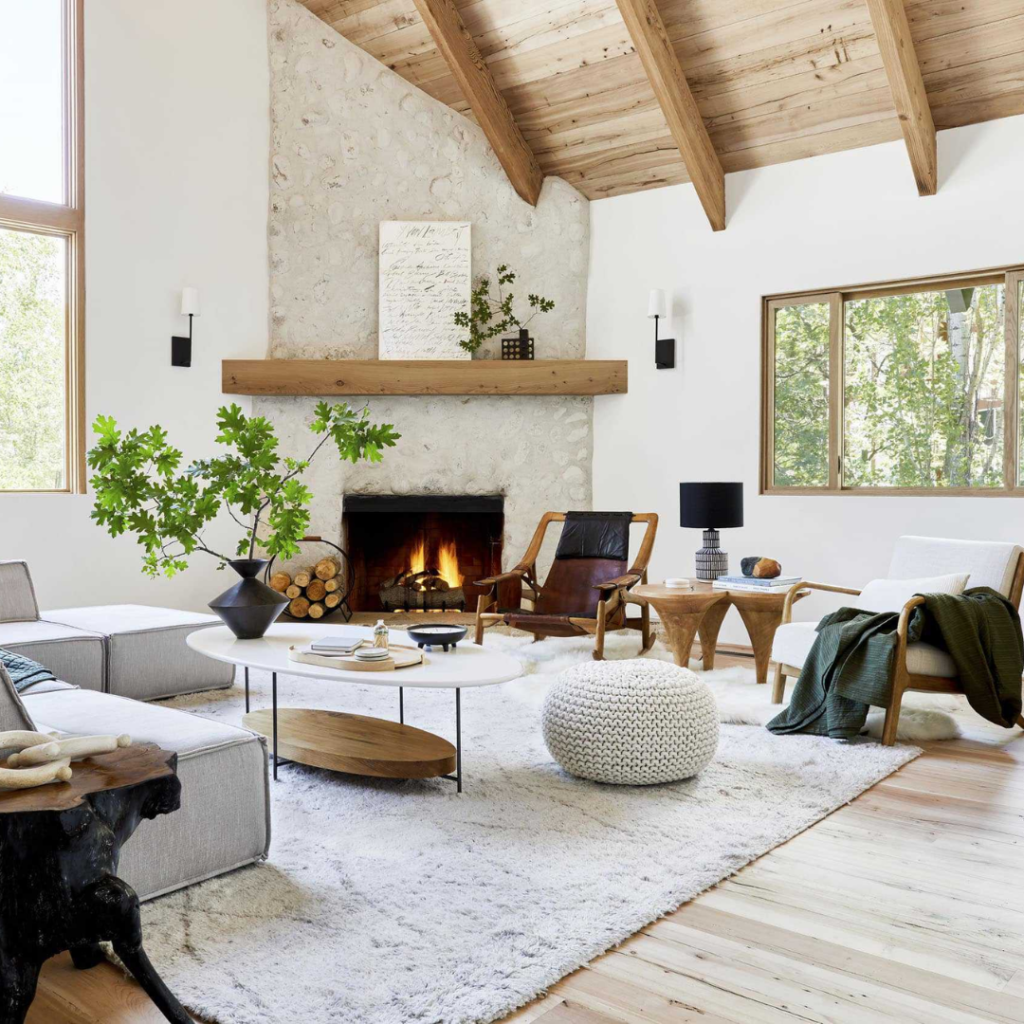
Scandinavian design originated from Nordic countries such as Denmark, Sweden, Finland, Iceland, and Norway.
It is centered around the Danish concept of hygge which emphasizes well-being by enjoying the simple things in life and cozy contentment.
The defining quality of Scandinavian design is its use of a crisp white base, paired with natural elements to create a sense of warmth. The color palette can be described as restraint, similar to minimalism, but with a focus on soft neutrals and light pastels. Think whites, creams, grays, and subtle pinks.
While both Scandinavian design and minimalism emphasize functionality and clutter-free spaces, texture is more important in Scandinavian design.
Scandinavian homes often have simple furniture layered with faux fur throws and rugs as rocks for texture. This is why Scandinavian design is often the choice for those who like simple and clean lines with a much more welcoming feel.
The Scandinavian style, which is one of my favorites, is all about simplicity, coziness, and a homey feeling, but with a touch of minimalism.
You’ll often see a palette of white, whitewashed floors, and black for high contrast, along with plenty of natural light and light wood tones. When you see those elements together, it immediately feels Scandinavian.
***What I love most about this style is its focus on coziness. Textures and warmth are key, with faux furs draped over wood benches and chairs or laid out on the floor—it just feels so inviting. Décor is minimal, but space and natural light are emphasized. Since functionality is also important, they often use functional pieces as decorative elements, like statement lighting fixtures that complement the design.***
Japandi

Japandi is a fusion of Japanese and Scandinavian design. While these countries are far apart, they share a common appreciation for nature and quality craftsmanship, making this hybrid style a natural fit.
Japandi blends the Scandinavian concept of hygge, which emphasizes coziness in the home, with the Japanese philosophy of wabi-sabi, which finds beauty in imperfection.
This is why japandi interiors feature natural materials and textures such as natural stones, paper, rattan, and wood that are imperfect but inherently beautiful.
In comparison to Scandinavian design, Japandi incorporates a richer and darker color palette. Featuring dark green, terracotta, aubergine, and black. The style also frequently incorporates feng shui principles, focusing on the art of arranging objects to achieve harmony and balance within the space.
RELATED: Timeless Interior Design Elements
Modern + Organic Modern
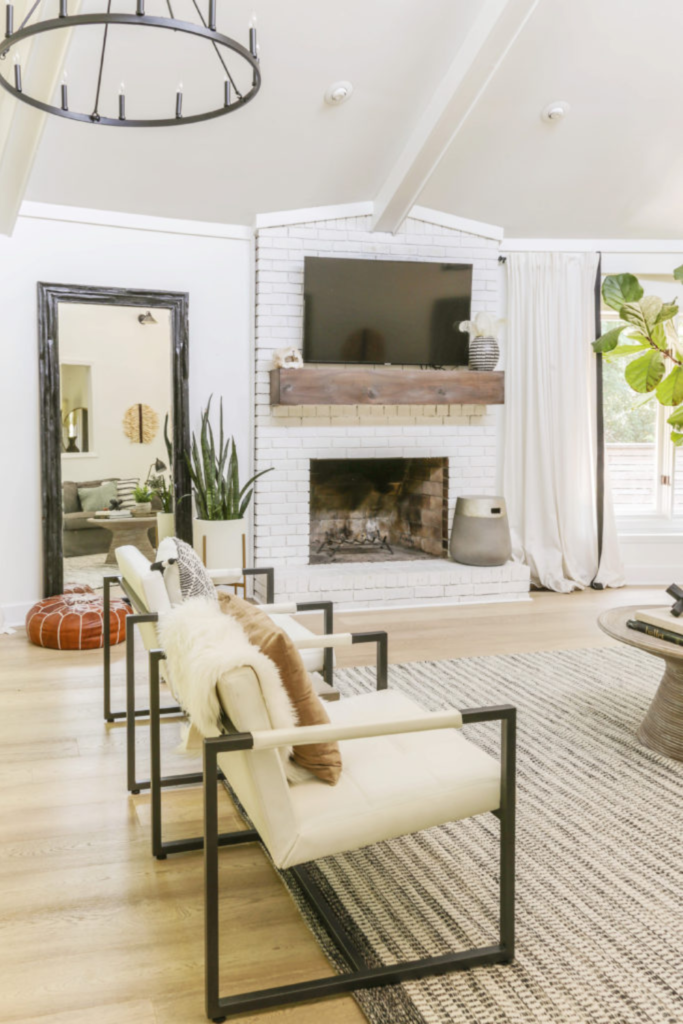
Organic modern is a relatively new design style that is all about a neutral color palette and creating interest through layering textiles and texture throughout the space.
The style often adheres to a light and airy palette which most commonly features whites, creams, beige, and pale gray. However, you can introduce colorful approach by making a statement with bold natural colors such as greens, and using off-whites to create balance.
As the name organic suggests the furniture and décor can sometime get a bit wild and sculptural depending on how far you want to push the aesthetic. But they often remain calm and serene avoiding a busy look.
The modern style, on the other hand, is all about clean lines, large windows, minimalism, and a palette of black, white, gray, and neutral tones, complemented by materials like marble, steel, chrome, and glass.
All of these elements define the modern look. To modernize your home, you’ll want to remove ornate details, simplify the lines, and incorporate features like flat cabinets, square edges on countertops, and perhaps even a waterfall countertop.
If your home already has features like glass railings, minimal detailing, or floor-to-ceiling windows, whether it’s a house or a condo, the modern style can easily be incorporated.
Take a look around at what you have, see if it aligns with the style you want, and choose interior design styles that best suits your space.
RELATED: Interior Design Styling Tips and Hacks
Traditional Interior Design Style
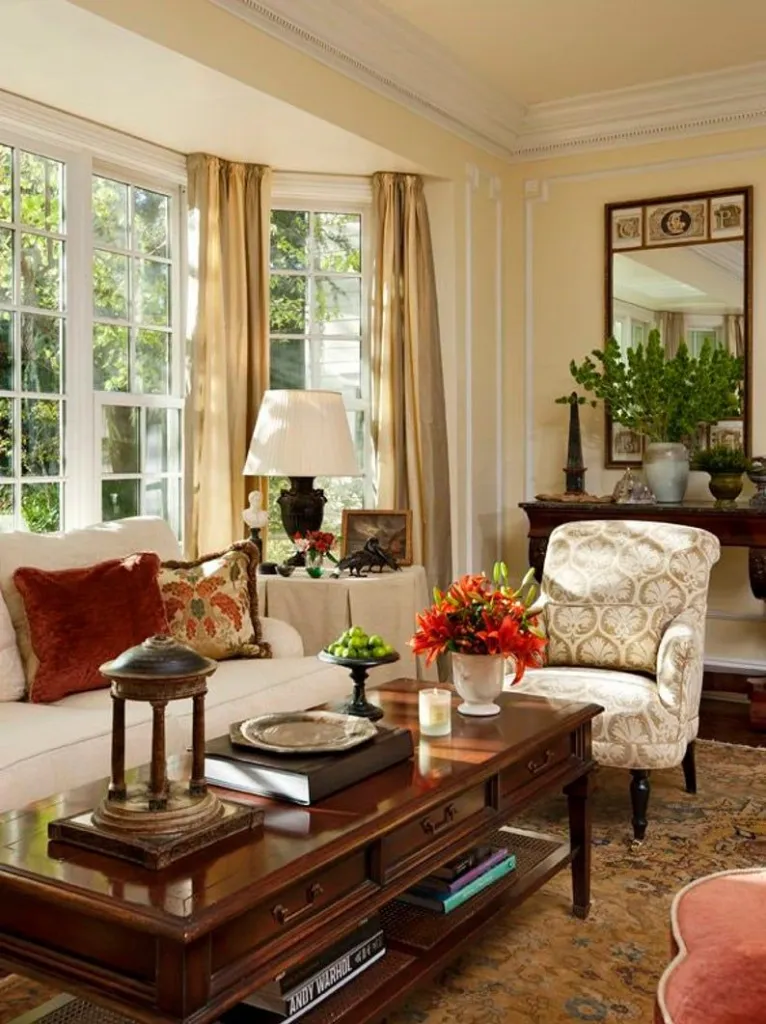
Traditional interior design does not follow current trends and is deeply rooted in 18th and 19th century European interiors. It is all about formality, symmetry and harmony in a way that conveys understated elegance.
Pure traditional style isn’t as popular today, but you may still find it in homesteads or heritage homes, especially those with detailed millwork like wainscoting and crown moldings.
In terms of furniture and décor, think of antique, dark ornate wood pieces made from walnut or chestnut, diamond-tufted lounges, wingback chairs, mirrors with Baroque-inspired frames, oil paintings, and vases with fresh flowers.
The color palette often includes rich burgundies, browns, and greens.
Okay, kind of going the opposite way of the modern style, let’s talk about the traditional style. This is all inspired from the 18th to 19th centuries. You’ll notice a lot more detail, a lot more ornate features, wingback chairs, have real legs, tufted furniture. That all screams traditional.
This is absolutely a timeless style. It will last forever.
***To me, traditional style often feels quite fancy. It’s perfect for a dining room or living room. If you want to furnish your home in this style, think diamond-tufted furniture, wingback chairs, gold accents, oil paintings, and portrait art. It’s all about taking inspiration from the 18th and 19th centuries and bringing that timeless elegance into your home today.***
Transitional Interior Design Style
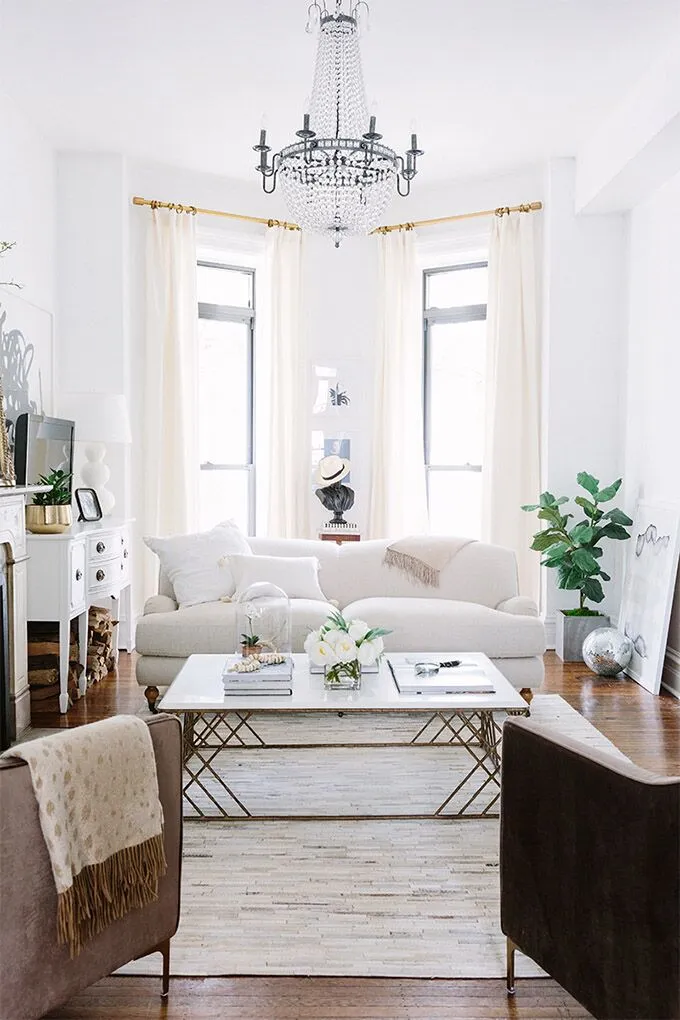
If the traditional style feels a bit too formal for you, but you still appreciate its timelessness, you might want to refresh it with a more youthful, modern twist—that’s where the transitional style comes in.
The transition style is a fusion of traditional and modern interior design styles. It is all about drawing inspirations from the past with a youthful twist.
In transition interiors you will often see color palettes that are more modern than traditional. The base usually features clean neutral tones, with accents inspired by traditional color palette such as rich earth tones.
When it comes to furniture and décor it is about blending both styles. You might see classic rugs paired with modern furniture, contemporary light fixtures, and modern artwork.
Architectural elements in transitional spaces often lean more traditional, with features like crown moldings and wall paneling.
You can still incorporate wingback chairs and tufted furniture, but mix them with modern light fixtures or contemporary rugs to create a harmonious blend of both styles. This balance is the essence of transitional design.
So, if you have traditional furniture pieces right now and you really want to modernize your space, you can kind of move yourself into a transitional look by bringing in modern décor pieces, and it won’t switch up that style instantly.
RELATED: How To Decorate Dark Academia
Industrial Interior Design Style

Industrial interior design is all about exposing what lies beneath. It’s a raw, edgy style where function is considered before form.
This design works particularly well in spaces with high ceilings, massive windows, and open floor plans like warehouses. Elements like exposed concrete slabs concrete slabs leather metal and other rough building materials are a must.
The color palette is usually black, white, and gray, but may feature bold accent colors. In terms of furniture and décor this style often features Edison bulbs, metal light fixtures, leather couches, and large abstract artworks.
I believe industrial design has its time and place, and if your space already has features like brick walls, exposed ceilings, or concrete floors, you can easily achieve the industrial aesthetic.
Coastal & Hampton
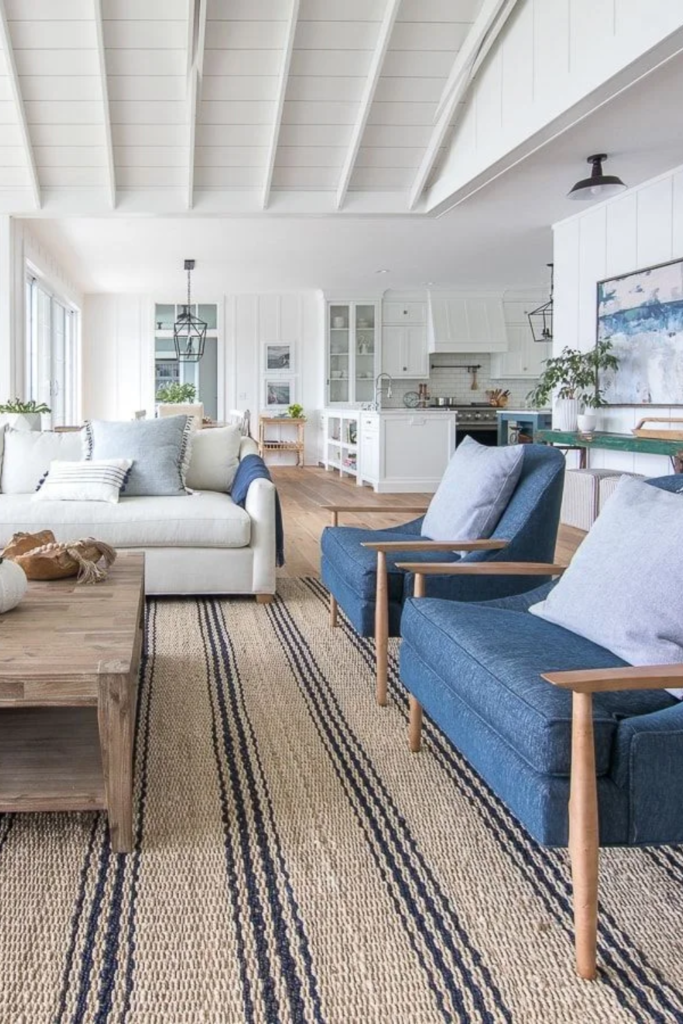
The coastal style is all about creating a relaxed and comfortable environment with a casual beachy atmosphere.
The color palette draws inspiration from the ocean featuring a light base with green or blue accents. Recently, the coastal style has moved away from clichés like coastal wall art and overly beachy décor such lifeboats and oars.
Instead, it embraces a much more subtle approach with natural materials such as linen, salvage wood, and rattan. And sophisticated décor pieces like photography and balls made from shell.
You can also experiment the coastal style through hybrids like mixing contemporary with coastal or Scandinavian with coastal.
The Hampton style is often confused with coastal style, but it leans more towards classic luxury. It is a style that encapsulates the relaxation of a beach house but often dot up with luxurious finishes.
Hence it is often called “casual elegance” coastal on the other hand is much more flexible and relaxed allowing for greater individual personality compared to the classic and refined Hampton style.
Minimalism
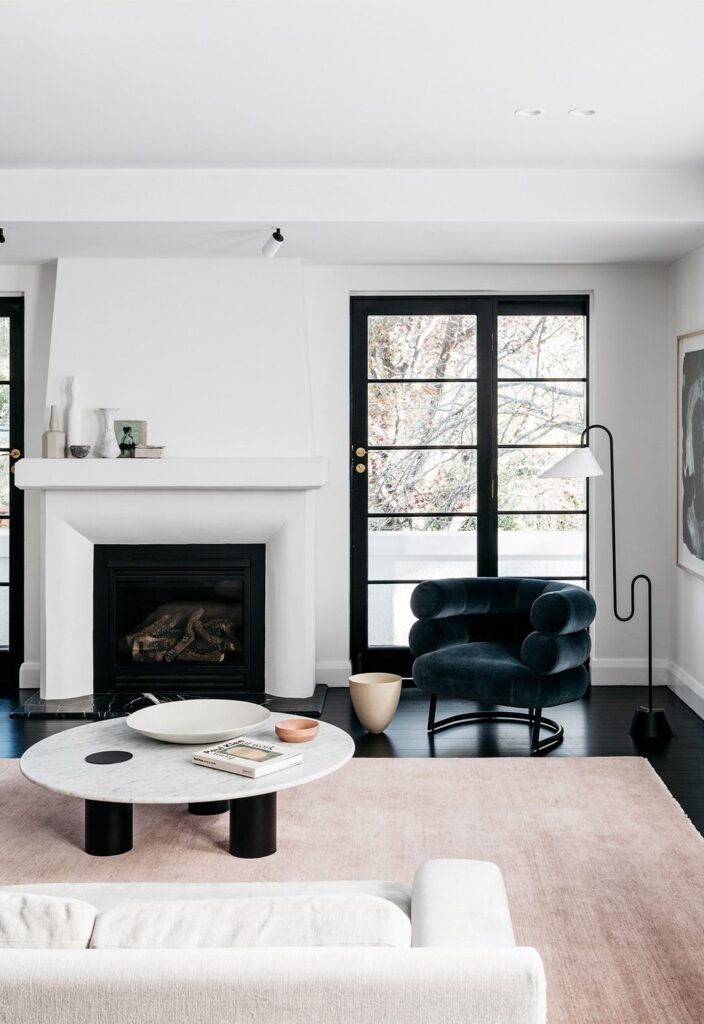
Minimalism is more than just an interior design style, it’s a way of life.
It emphasizes deliberate styling where everything in the home serves a purpose—LESS IS MORE.
Minimalist interiors are highly inspired by modern and Scandinavian styles where décor design features are taken and simplified even further. The color palette is hyper restraint often featuring only black and white.
It is about creating a bright and clean space that is soothing and inviting. However, this approach can be polarizing for some.
RELATED: Interior Design Styling Tips and Hacks
Contemporary Interior Design Style

Lastly, let’s talk about the contemporary style, which is all about what’s trending right now.
This style often features elements like arches, curved and round furniture, dark moody spaces, high contrast, linen furniture, oak floors, green kitchens, open shelving, and French doors. Essentially, anything that’s currently in vogue is considered contemporary.
If you design your space in the contemporary style, keep in mind that it might become outdated in the future.
This is fine if you enjoy frequently updating your look, but it’s not a style that remains constant. Contemporary design is ever-changing, and you’ll find it’s usually easy to shop for since trendy pieces are readily available.
Hybrid styles
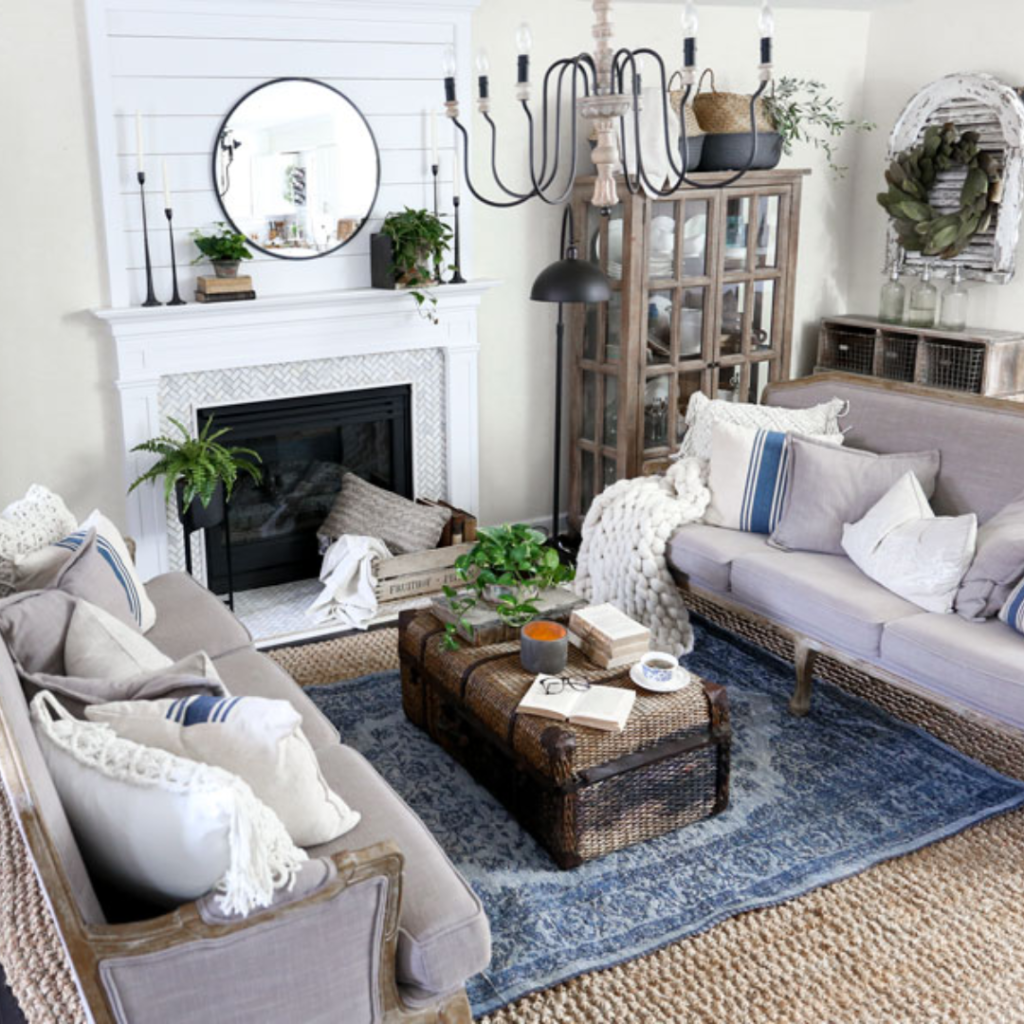
While we’ve primarily explored popular interior design styles, it’s important to remember that DESIGN IS FLUID. So you don’t need to have one tunnel vision of one design style and don’t be afraid to mix different styles.
The idea that “opposites attract”also rings true in interior design styles. Combining contrasting styles can prevent a room from feeling too uniform and can make your home feel unique.
In recent years the lines between different interior design styles have become increasingly blurred as people combine aspects of different styles to create something new.
The hybrid styles we have gone through in depth are transitional, modern farmhouse, and japandi but there are many other less common hybrid styles like boho lux, scandi, industrial, mid-century glam, boho coastal, and Scandinavian coastal, to name a few.
RELATED: Timeless Interior Design Elements
Tips on Blending Interior Design Styles
There’s no right or wrong way to mix design styles, but following a few guidelines can help ensure that the result doesn’t look confusing or disjointed.
1. First make sure that your interior style reflects or complements the architectural style of your home or apartment. For new build apartments you can probably skip this step as you have a black canvas to work with.
2. Mix 2 to 3 interior design styles. Limit yourself to mixing two or three interior design styles. A home with too many styles can appear chaotic. There’s no strict formula for the ratio of styles; it could be fifty-fifty, split three ways, or any combination. The key is to incorporate multiple elements of each style throughout your design.
If only one piece of contemporary furniture is mixed into a rustic setting, it will probably look out of place.
3. Decide on a color palette. Decide on a unifying color palette to successfully mix styles. This doesn’t mean that it has to be lifeless, you can have a blue wall, green cabinetry, or even multiple colors at the same time.
However, having a cohesive color scheme will help ground your design.
***Bonus tip***
Mix old with new to add depth and character, this can have some depth and character especially for those antique lovers.